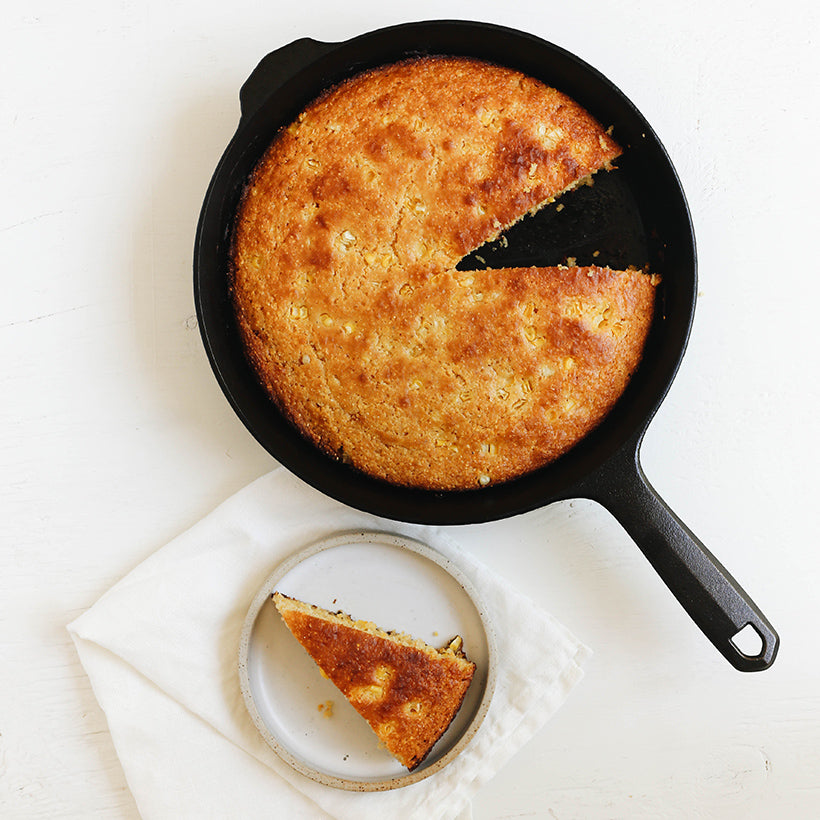At the Field Company, we are interested in what makes something good—and we like to explore that question by looking at great materials, great design from the past, historical production processes and things that have endured for a long time. We’re also obsessed with natural materials—something you’ll hear more about from us in the future. In that spirit, we’d like to share a story about a material and product that has been as impactful in America as iron—wool.

Cast iron cookware and wool textiles shared a spotlight in early industrial America. The cast iron skillet became the workhorse of every American kitchen in conjunction with the wood burning stove—which was revolutionary in its efficiency to heat American homes. The Field Skillet leans into that history by maintaining the same size naming conventions that matched burner holes on those wood stoves. High quality wool textiles rose to prominence around the same time—starting in the late 19th century.
Wool is an exceptional material whose natural insulating and moisture-resistant properties are apparent in a broad range of applications: rugged garments for cold and inhospitable climates and fine, soft textiles woven for maximum comfort. Similar to cast iron cookware, most modern wool textiles aren’t quite as nice as items made over a century ago—and the reasons for that get into how it’s made and what’s being optimized for.

Industrial designer Alex Chatham is five generations removed from the Alexander Chatham who established a wool carding business in the 1860s at his mill in Elkin, North Carolina. Over the next few decades, Chatham’s mill grew into a vertically integrated wool manufacturer whose Chatham Blanket was sold nationwide by the 1930s.
Much like its vintage cast iron contemporaries, the shifting winds of global manufacturing in the latter half of the 20th Century saw the Chatham mill’s closure. Today, Alex Chatham is reviving both the family business, and returning to the meticulous manufacturing processes that made the Chatham Blanket an American classic: read more about the project on Kickstarter.


For Chatham, the machinery is key: today’s projects use the same century-old Davis & Furber carding apparatus as the original Chatham mill.
These Davis & Furber machines are no longer in production, and work with exceptionally wide four-foot wired rollers. Modern analogues are more narrow and typically use a slightly bowed roller, producing slightly tapered and inconsistent yarn, in turn limiting the specific tolerances of the finished textile.
(This is the kind of issue we encountered often in the research phase of the Field Company: modern foundry and machining equipment isn’t set up to create thin-walled or smooth machined cookware. Lost manufacturing capacity needs to be relearned or re-invented, and vintage machinery is worth its weight in gold.)
Precise control at the carding stage means Chatham can wind yarn with much tighter tolerances and create strong woven fabric from fine variable blends, in this case mohair and merino wool. The final stage is napping: a finishing process which creates a distinctive soft, fuzzy feel and accentuates the blanket’s heat insulation and moisture wicking properties.

For the new Mohair and Merino Wool Throw Blanket, Chatham worked with designer Emma Harling to produce a new design with inspiration drawn directly from the historical Chatham archives. The final olive-check pattern is a close cousin to heritage Chatham designs.
With wool blankets, quality is tactile: warmth, and dryness in the elements are proof of the material’s strength, but the specific softness and texture of a well-made American wool blanket—or a luxurious Italian sweater, for that matter—are unmistakable.
Field Company founder Chris Muscarella, conversion was immediate: "I've always wanted to like wool more than I have—I liked it for things like overshirts and outerwear but always found it a little itchy. When Alex Chatham gave me a blanket sample, the handfeel was otherworldly and it's quickly become a house favorite."

We look forward to many seasons of warmth, and invite you to support the Chatham Kickstarter campaign—live through March 2023.




